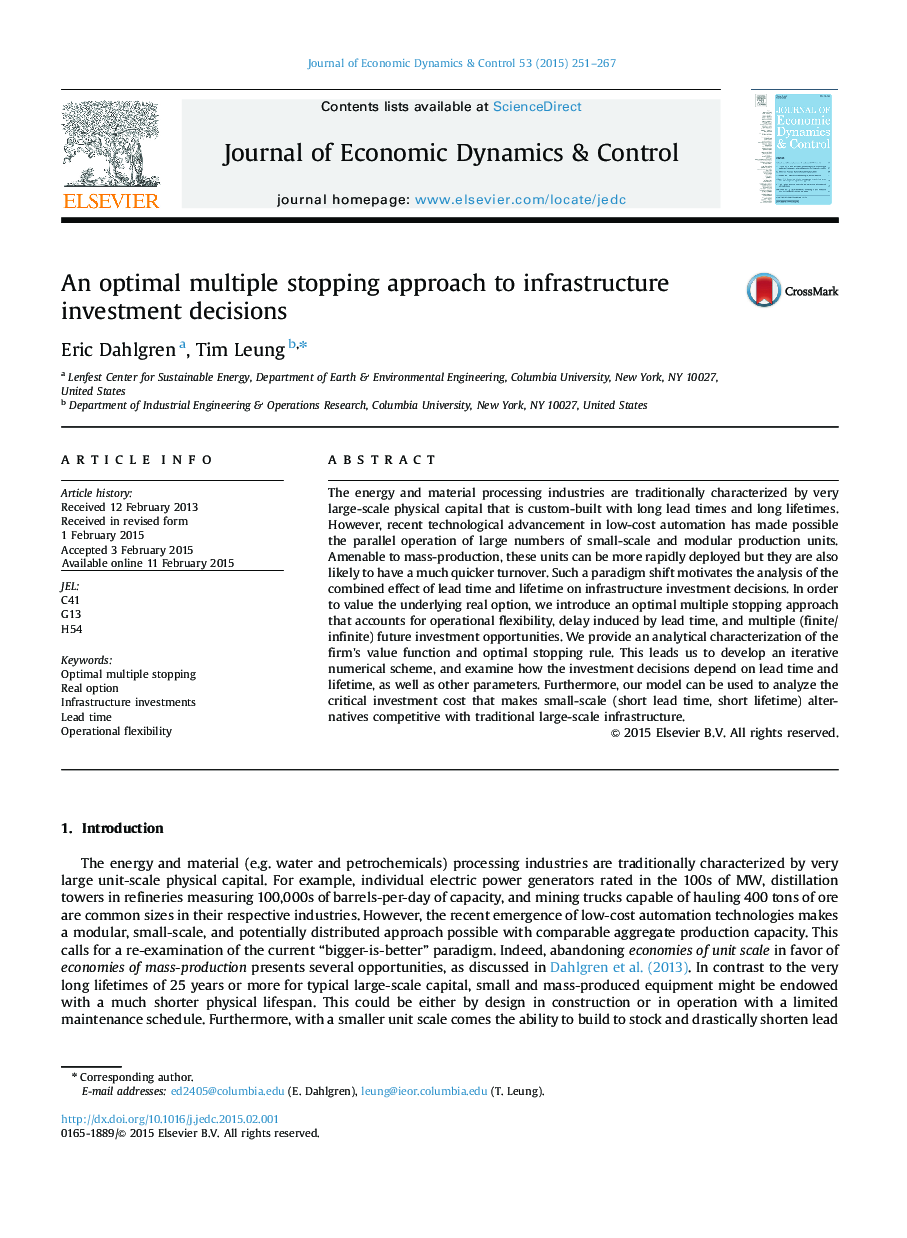| Article ID | Journal | Published Year | Pages | File Type |
|---|---|---|---|---|
| 5098319 | Journal of Economic Dynamics and Control | 2015 | 17 Pages |
Abstract
The energy and material processing industries are traditionally characterized by very large-scale physical capital that is custom-built with long lead times and long lifetimes. However, recent technological advancement in low-cost automation has made possible the parallel operation of large numbers of small-scale and modular production units. Amenable to mass-production, these units can be more rapidly deployed but they are also likely to have a much quicker turnover. Such a paradigm shift motivates the analysis of the combined effect of lead time and lifetime on infrastructure investment decisions. In order to value the underlying real option, we introduce an optimal multiple stopping approach that accounts for operational flexibility, delay induced by lead time, and multiple (finite/infinite) future investment opportunities. We provide an analytical characterization of the firm׳s value function and optimal stopping rule. This leads us to develop an iterative numerical scheme, and examine how the investment decisions depend on lead time and lifetime, as well as other parameters. Furthermore, our model can be used to analyze the critical investment cost that makes small-scale (short lead time, short lifetime) alternatives competitive with traditional large-scale infrastructure.
Related Topics
Physical Sciences and Engineering
Mathematics
Control and Optimization
Authors
Eric Dahlgren, Tim Leung,
